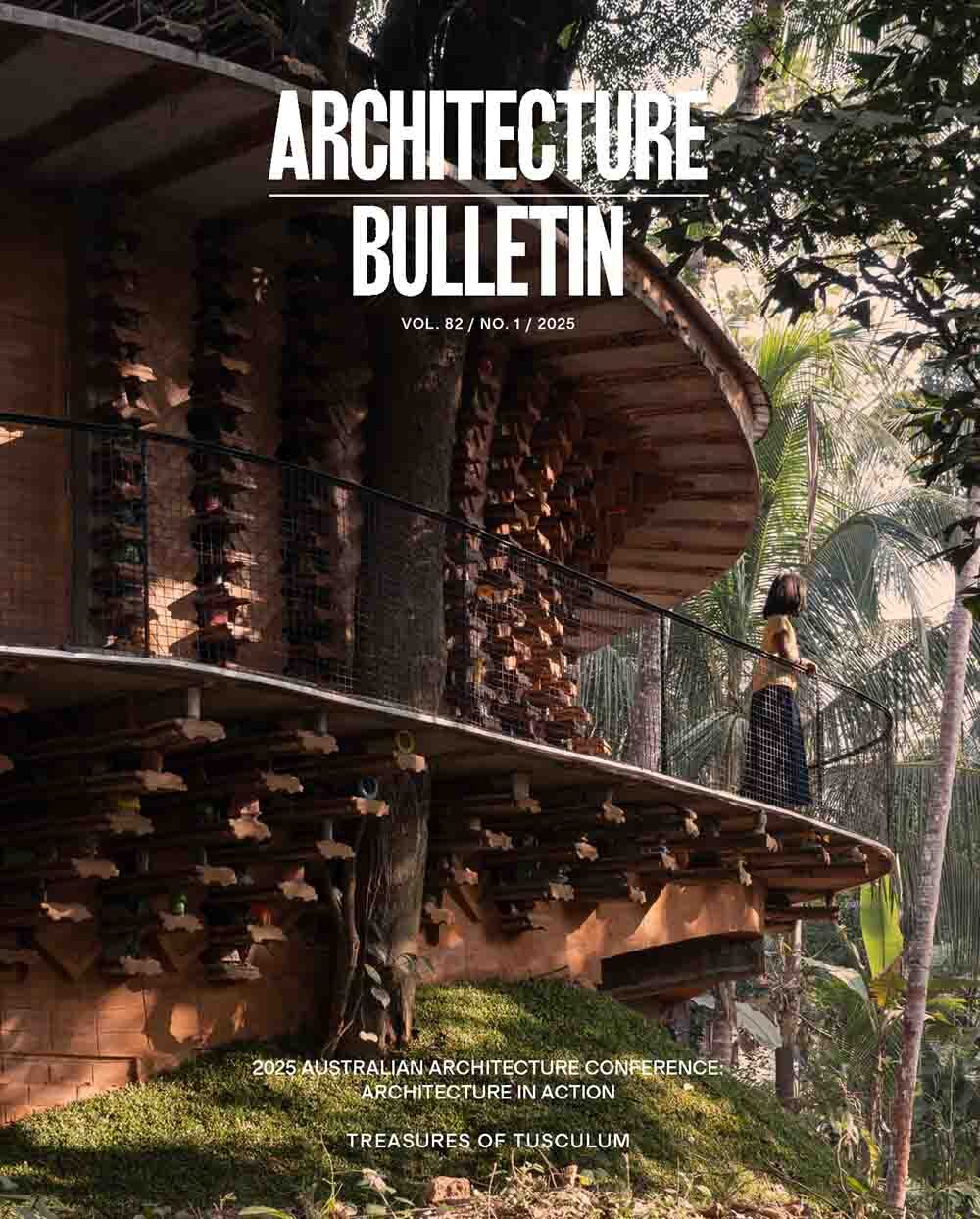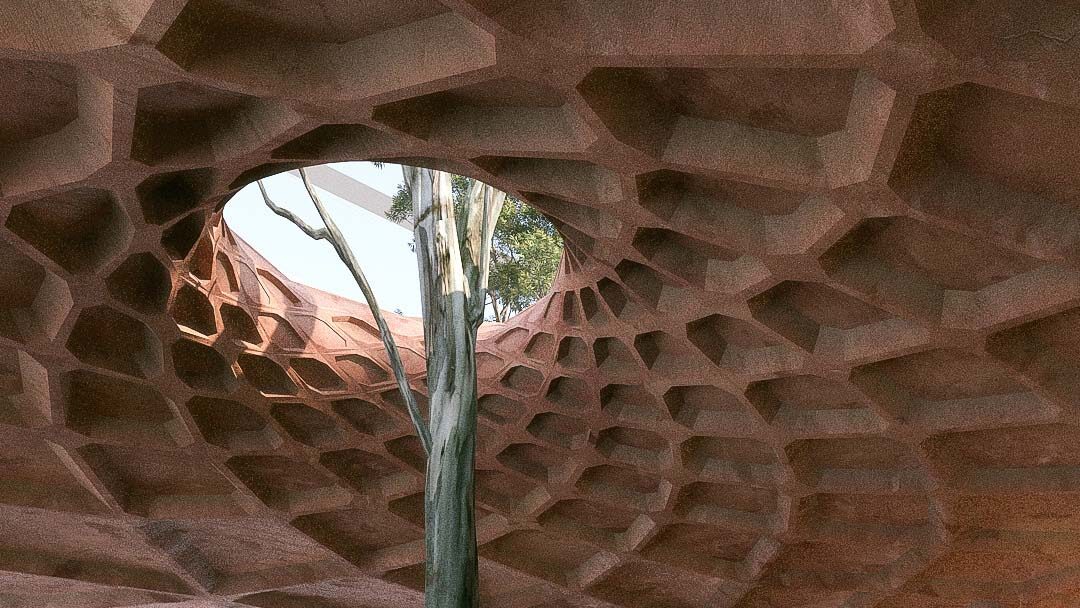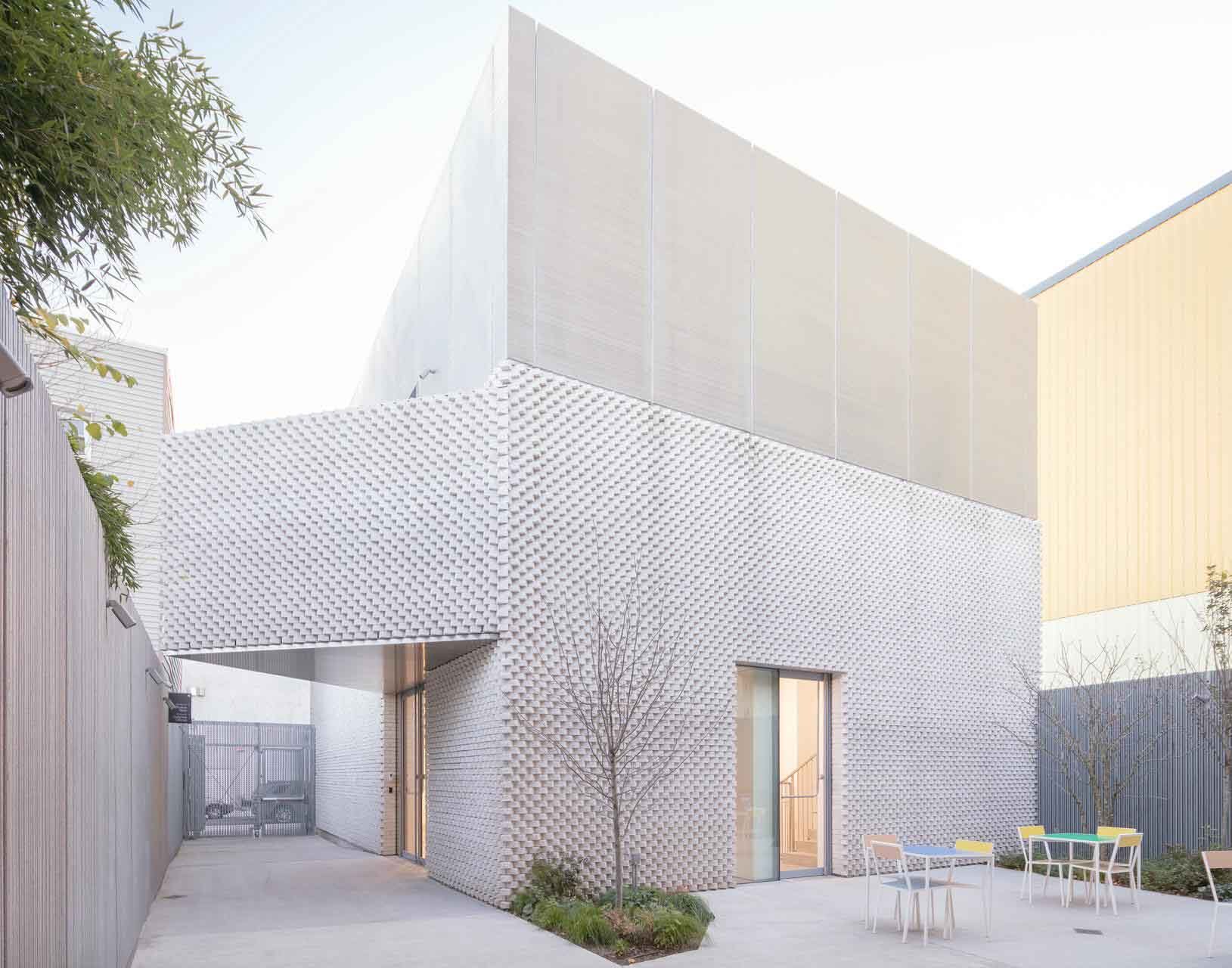
Mark Raggatt: Was there a person, place, or experience that focused your design philosophy?
Vinu Daniel: I was highly influenced by the thoughts of Gandhi and design strategies of architect Laurie Baker. Gandhi’s advice about the ideal house being made of materials found within a five-mile radius inspired me in the beginning of my career and remains one of our core ideologies. Meeting Laurie Baker was a turning-point, completely transforming my outlook on architecture. Two years at the Auroville Earth Institute, for the UN Development Programme post-Tsunami construction was another pivotal experience. There were people, places and experiences, that helped me find my own design philosophy, and a strong commitment to the field.
Mark Raggatt: Your practice doesn’t look like a typical architectural office, can you tell us about the way you work and how you go about delivering projects for your clients?
Vinu Daniel: Our practice functions beyond the confines of the typical office setup. We’ve found that our unique approach and process deliver optimum results, when the design team is actively involved on site. Designing from an office has a lot of limitations, especially in the kind of work we are involved in, as all our projects are designed with respect to its natural context, and its site characteristics. This is also appealing to the clients, as having someone from the design team closely monitoring the entire process adds immense value and reassurance.
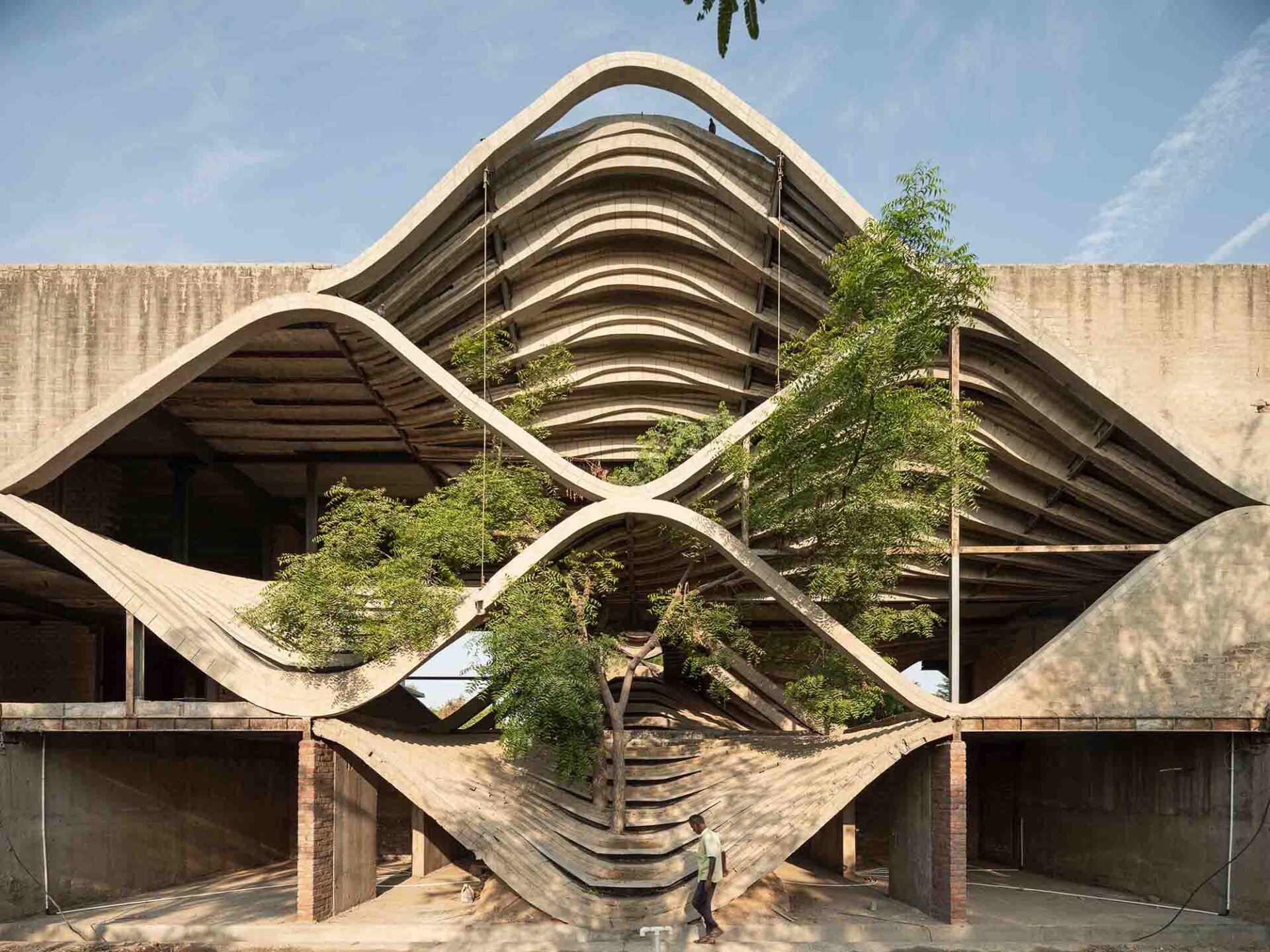
Mark Raggatt: Many of your projects seem to have a strong narrative or a sense of place. How important is storytelling in your design process?
Vinu Daniel: A strong narrative or a sense of place, are aspects that emerge when the design responds to the unique characteristics of the site, rather than imposing on it. We do not believe in creating spaces that take away from the site, its natural characteristics. Rather the design should be able to elevate the inherent qualities of the site and maintain its natural identity. This approach helps us iterate the design better and in turn creates a narrative that is not only compelling but relevant to the essence of the place. Storytelling becomes an organic outcome of our design process rather than a predetermined goal.
Mark Raggatt: What role do local stories, traditions, and environmental histories play in your architectural choices?
Vinu Daniel: Local traditions and history influence finer design details; however, our primary focus remains on the site’s physical attributes like topography, climate and other environmental factors. While we find incorporating local character can enhance the project’s identity, we carefully integrate these only when they can contribute to the value of the project, functionality, or its sustainability.
Mark Raggatt: Your buildings acknowledge and navigate their environments, letting in the air, leaving earth exposed, and trees in place. What is the natural world teaching you about architecture and cities?
Vinu Daniel: Its most evident lesson may be that architecture is meaningless if not working for a greater cause. The constant drive to build holds no value if we fail to consider the aftermath. Ideologies can only remain abstract, if we do not embody it in our work. For us, it is of the utmost importance to reflect our commitment to our core ideologies of prioritising more sustainable choices, in our work.

Mark Raggatt: Wallmakers is known for techniques deploying waste materials. Could you tell us about your concept of making beauty in this disaster we have created for ourselves?
Vinu Daniel: I believe beauty is not just about the aesthetics, but also about the resourcefulness of the process. To me, beauty is an aspect that emerges when we can reduce our dependency on natural resources, or materials, minimising our embodied energy by incorporating the materials that are already available, like discarded tyres, or discarded plastic toys, into something meaningful and visually striking; when we give new life to what would otherwise be environmental burdens. The aesthetical aspect, or the beauty of a project is the statement it makes in terms of resilience, creativity and ingenuity of the process. And there’s always a way to do this if we are willing to look beyond the obvious choice.
Mark Raggatt: Do you see the future of urban construction integrating more of the techniques pioneered by Wallmakers?
Vinu Daniel: It would be nice to see this happen. However, considering that globally, we are not at a place where responsible choices in construction are prioritised, it seems like a challenge.
Mark Raggatt: Many architects today aim for sustainability, but your approach is radical in its rejection of conventional materials. Do you see your work as an act of resistance against mainstream construction practices?
Vinu Daniel: Resistance is more a result of necessity than rebellion. I’m not keen on following conventional paths just because they’re easier or more familiar. There’s a lot to be explored, a lot to be experimented with. It does not make sense to limit ourselves to the ordinary, especially with the potential of the less explored: exploring and experimenting with the less conventional isn’t just a creative choice, it’s a response to the urgent need for more sustainable and innovative solutions.
Mark Raggatt: How do you balance structural innovation with local craftsmanship in your projects?
Vinu Daniel: We often work on complex structural systems, due to the nature of the unconventional materials and forms that we incorporate. Local craftsmanship is essential in ensuring that the design remains culturally and contextually relevant. Both aspects help in establishing a balance, which not only helps improve the identity of the project but also adds value to its purpose.
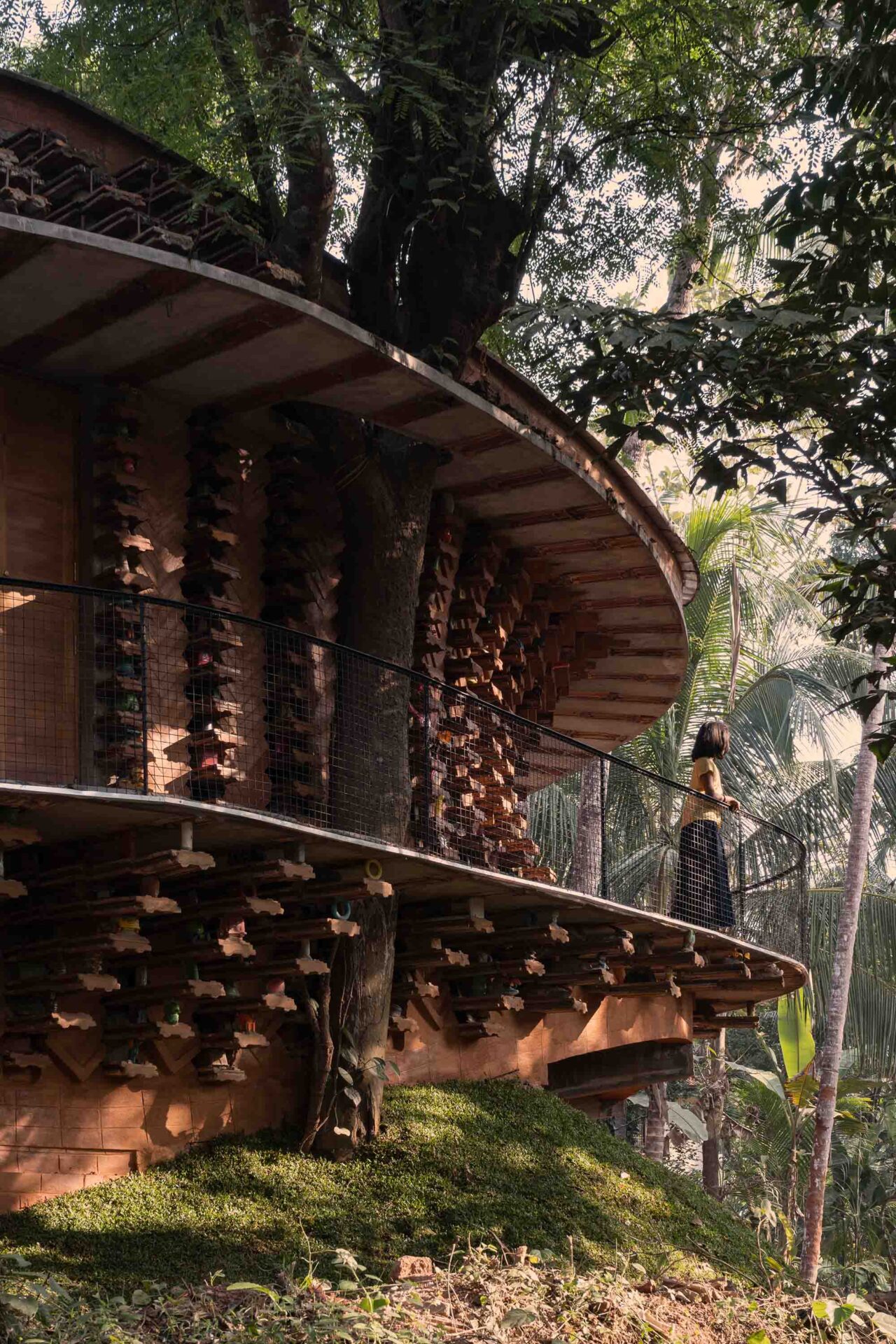
Mark Raggatt: Is there a particular material or technique you haven’t worked with yet but would love to explore?
Vinu Daniel: It’s difficult to mention any in particular, especially since we are experimenting with new materials and techniques. We’re always eager to explore and push boundaries.
Mark Raggatt: Is climate responsive architecture a material and technological problem or a political one also?
Vinu Daniel: It is certainly a material and technological challenge. There’s a lot that goes into finding the right solution to mitigate or manage the effects of climate. However, it is also quite political. A lot of these measures can be influenced by local regulations, and policies. Truly achieving climate responsive architecture is only possible with innovative design measures and a political commitment to support the same.
Mark Raggatt: What is your opinion on the ethics of luxury architecture in a time of ecological crisis?
Vinu Daniel: I do not think luxury architecture can be defined easily. If it implies the excessive use of resources, overbuilding, or unnecessary extravagance, then it would be hard to justify, especially in a time of an ecological crisis. Everything we build has consequences, and even if it that luxury was achieved through sustainable materials, it raises questions about relevancy and necessity. True luxury would be less about exploiting resources, and more about building spaces that extend beyond requirements, and create a positive impact on people and the planet.
Vinu Daniel founded Wallmakers in 2007. The practice aim is to build sustainable spaces that are responsive to specific site contexts and conditions, while maintaining a balance between innovative, utilitarian designs.
Mark Raggatt RAIA is a Sydney-based director of ARM Architecture.
